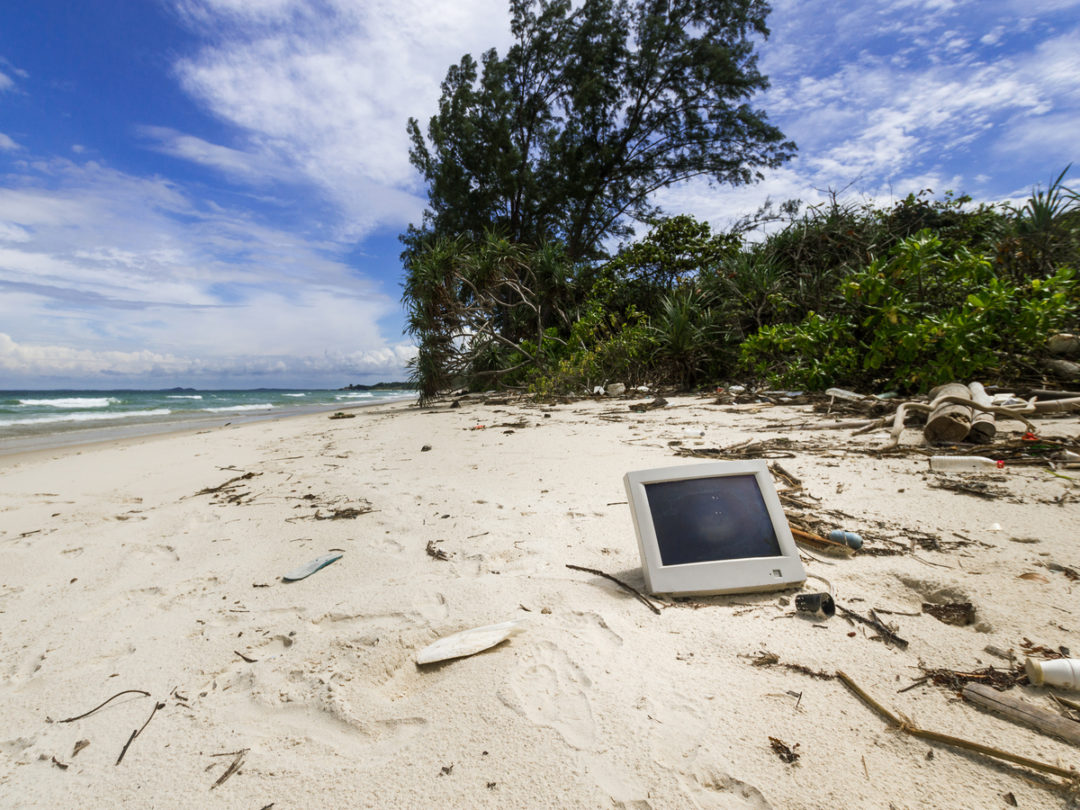
Visit Our Sponsors |
|
|
|
|
|
|
|
|
|
|
|
|
|
|
|
|
|
|
|
|
|
|
|
|
|
|
|
|
|
|
|
|
|
|
|
|
|
|

Talk of technology almost always centers on the latest and greatest piece of hardware. But what about the stuff it’s replacing?
For every new device to hit the market, there’s one that needs to be discarded. Few businesses, however, have a coherent plan in place for safely and efficiently retiring old equipment.
A new white paper from Liquid Technology zeroes in on the oversight. Americans dispose of 9.4 million tons of electronics per year, it notes, and that mountain of obsolete machinery is only expected to grow.
The paper, “A Retirement Plan for Your I.T. Assets,” puts the current market value of asset disposition at nearly $10bn, with the number expected to double by 2024. It only makes sense, therefore, for companies to craft disposal plans that can minimize losses while ensuring compliance with ever-stricter environmental regulations.
Taken as a whole, the challenge can seem insurmountable. According to a recent study by Statista, annual shipments of personal computers, laptops and tablets have averaged 400 million units over the last decade. Every one of those spanking-new devices is destined for a second-hand user, recycling operation or, worst of all, a landfill.
Multiple trends have combined to create a flood of technology ripe for disposal. The ascendance of the cloud as a means of storing data has made many in-house computers redundant. Liquid Technology estimates the value of dispositional inventory generated by cloud migration at $40.8bn by the end of this year, 10 percent higher than in 2017.
Other factors include stepped-up relocation of data centers; office moves caused by bankruptcies, mergers and acquisitions, and emerging technologies that necessitate computer upgrades.
Some companies have chosen to kick the can down the road by piling up obsolete equipment in offsite storage warehouses. Such a strategy becomes increasingly untenable, however, as resale value depreciates, storage fees mount, and the threat of hacking or theft intensifies.
Additional reasons for failing to adopt a long-term disposition plan include uncertainty as to where to begin, lack of resources to devote to the problem, lack of expertise required to assign proper value to old equipment, and ignorance of current compliance standards and regulations.
Liquid Technology recommends that companies engage I.T. asset disposition (ITAD) professionals who follow NIST 800-88 standards for media sanitization, and D.O.D.5220-22 data-wiping techniques of the National Industrial Security Program. Reference checks and proof of insurance are also essential. Beyond that, there are at least five additional standards to which ITAD efforts must adhere. (Given the complexity of the effort, and the multiple opportunities for costly error, it’s hardly surprising that so many companies have failed even to get started.)
Merely checking all the compliance boxes at the outset of an ITAD program isn’t sufficient. ITAD, Liquid Technology stresses, “is not a set-and-forget process.” Laws governing data privacy, data destruction and environmental responsibility are constantly changing, and differ markedly from region to region. In the U.S. alone, personal data and payment records are subject to at least four separate laws at the state and federal level. Then there’s the European Union’s General Data Protection Regulation (GDPR), which promises to have a huge impact on the way that companies use consumer information. And don’t forget industry-specific laws such as the Health Insurance Portability and Accountability Act (HIPAA), which includes language protecting the confidentiality of patient data.
The consequences for failing to follow this tangle of rules are substantial. In 2015, the State of California hit Comcast with a $26m fine for failing to lawfully dispose of electronics equipment. AT&T paid out $23.8m for a similar lapse the year prior.
The starting point for devising a workable retirement plan is classifying the state of the equipment in question. The Liquid Technology report describes three stages of maturity: current, aging and obsolete. For each, there is a window within which a company can receive maximum resale value.
“When it comes to dispositioning,” the report says, “sooner is better.” It sets out disposal windows for various types of equipment: three to five years for P.C.s, laptops and servers; three to four for smartphones and mobile devices; five to seven for switches and routers, and 10 years for LCD monitors.
“Avoid letting unused technology sit in a closet depreciating,” the report says. “Action can mean more money to purchase new technology in the next refresh cycle.”
Companies with large workforces should account for the additional time needed to retire equipment throughout the organization. A business with a few thousand employees can require more than a year to complete a laptop upgrade. For data-storage projects, the more servers involved, the long the replacement timeline.
Some industries, such as financial traders and technology developers, are required to adopt shorter replacement cycles, due to a need for state-of-the-art I.T. systems. The equipment and devices they shed are likely to fetch higher prices because of their relative youth. Manufacturers, retailers and healthcare providers are among the sectors that are slower to upgrade. But regardless of the rate at which a company replaces or resells I.T. equipment, it must take extreme care to meet all requirements for data destruction.
“It is up to you to choose an ITAD strategy that ensures your company’s security, maximizes ROI, and minimizes business risk,” the Liquid Technology report says. “It is imperative that you understand the span of your I.T. asset lifecycle, the security and environmental regulations that allow proper disposition, recouping as much of your original investment as possible.”
RELATED CONTENT
RELATED VIDEOS
Timely, incisive articles delivered directly to your inbox.






